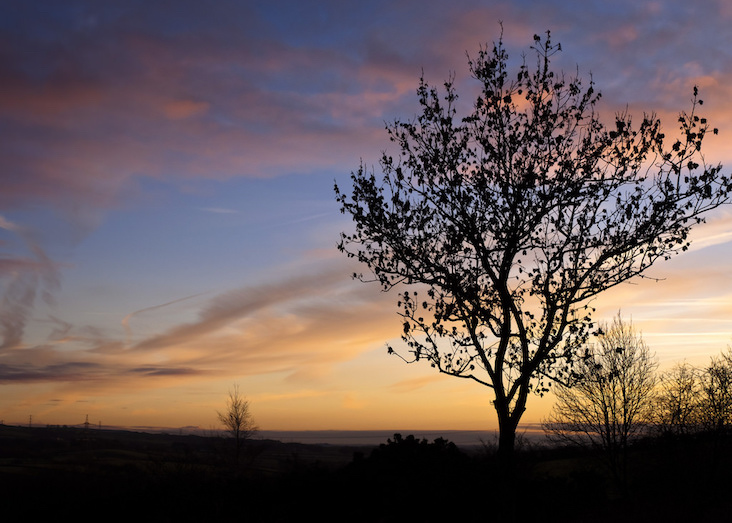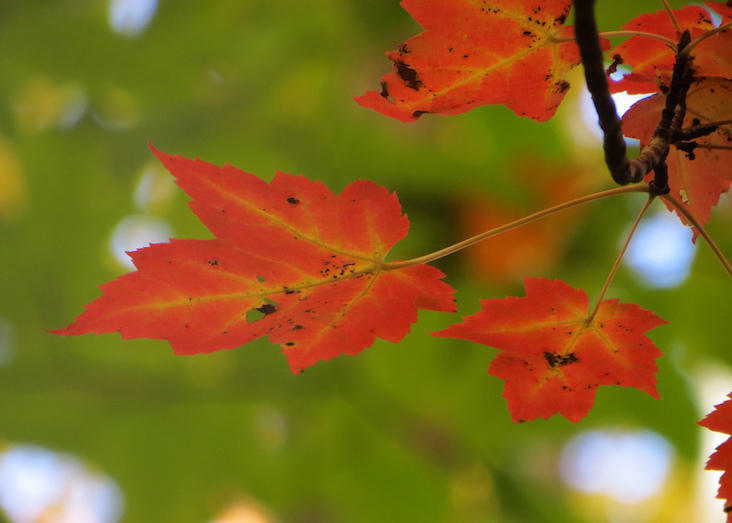In the fall, trees put on a pretty impressive fashion show. Leaves that were green all summer long start to turn bright red, orange, and yellow. But where do these colors come from?
It all starts inside the leaf. Leaves have color because of chemicals called pigments, and there are four main types of pigment in each leaf:




Leaves are green in the spring and summer because that’s when they are making lots of chlorophyll. Chlorophyll is important because it helps plants make energy from sunlight—a process called photosynthesis.
The summer sunlight triggers the leaves to keep making more chlorophyll. But trees are very sensitive to changes in their environment.
As summer fades into fall, the days start getting shorter and there is less sunlight. This is a signal for the leaf to prepare for winter and to stop making chlorophyll. Once this happens, the green color starts to fade and the reds, oranges, and yellows become visible.

Shorter days in the fall are a signal for trees to start preparing for winter. Photo by Tom Skarbek-Wazynski (Flickr Creative Commons)
Weather is also an important part of the color change. In the fall, the temperatures get colder and there is also more rain and snow. Changes in these weather conditions can play a role in how early the leaves change and how long they keep their beautiful colors.
Extreme weather changes can also have an effect on the leaves. For example, a drought or an early frost could make the leaves fall off of the trees before they’ve had time to change colors.
So if you want to know how long the colors will last this fall, be sure to keep an eye on the weather!





